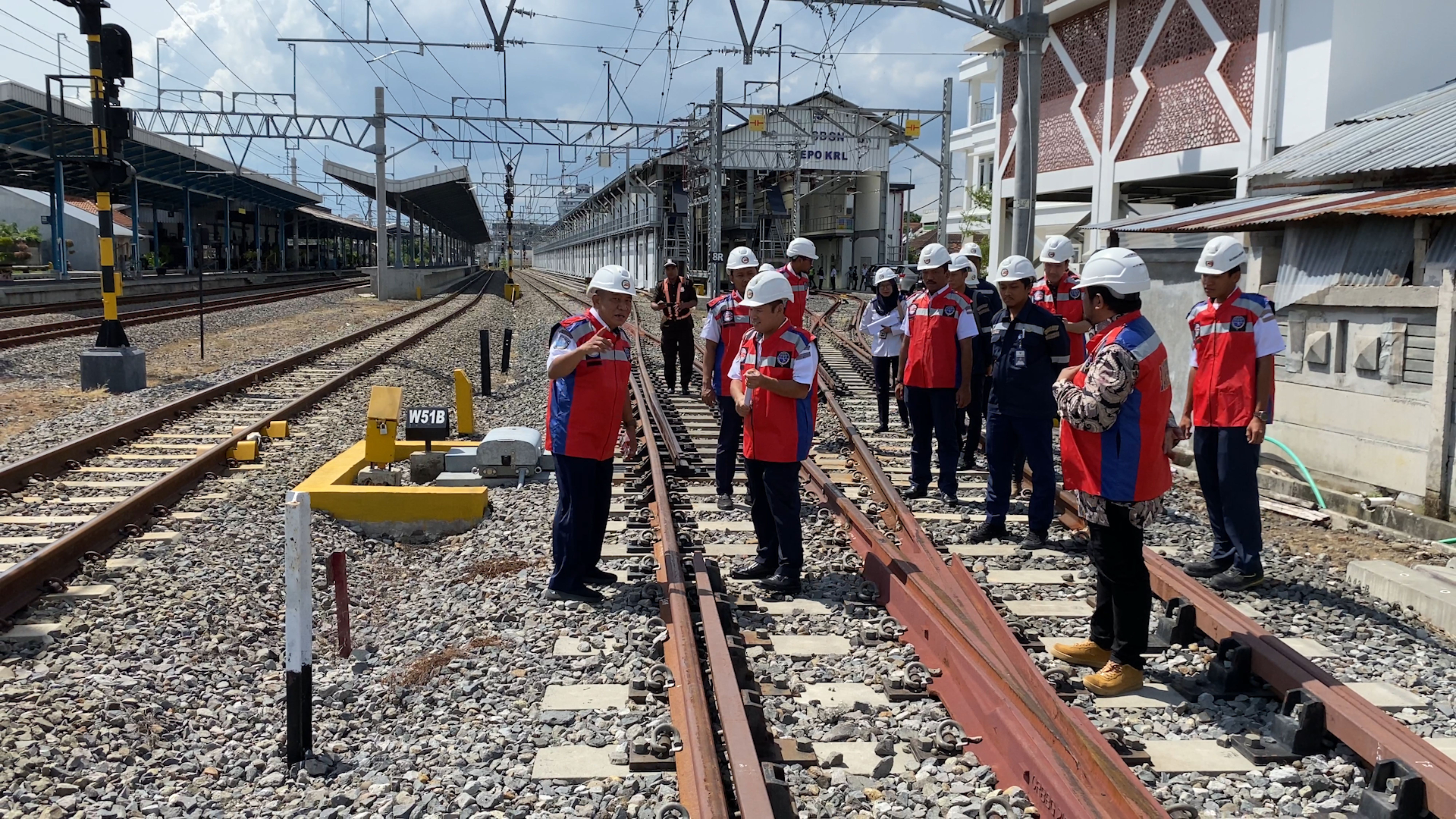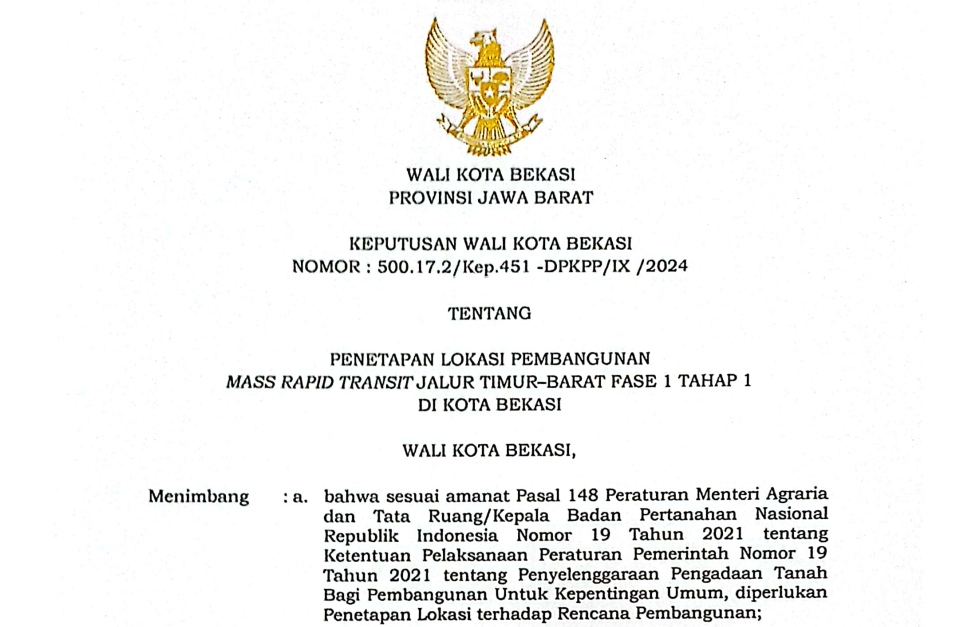Measuring BLU: Quo Vadis FGD One Decade of Baperka

The year 2024 marks the ten-year timeline for the Railway Maintenance Center (Baperka) to be present in the Indonesian railway industry. This decade's performance is part of the ladder that the Railway Maintenance Center must traverse to become a major railway maintenance institution in Indonesia.
For this reason, this tenth year is the right momentum to see what the posture of the Railway Maintenance Center is? Because if you look at the 2023 LKIP and 2024 RKA, at least until the beginning of 2024, the Railway Maintenance Center will still place its performance focus on maintaining state-owned railway facilities (SMN).
Since 2022, the Railway Maintenance Center has targeted obtaining PNBP figures from the Center's Work Agreement (PK). The team has also taken strategic steps to utilize assets to touch various stakeholders who are directly related to the Hall's services.
Then until 2024, the Center has been strengthened by adding institutional assets in the form of Depok KRL Depot and Solo Jebres KRL Depot facilities, apart from the Ngrombo Workshop facility which will continue to be developed into a modern railway maintenance center. At least it is hoped that Baperka's development direction will support the 2030 National Railway Vision as stated in the National Railway Master Plan (RIPNas), namely "Creating a railway that is competitive, integrated, technological, synergistic with industry, affordable and able to answer development challenges".
Until this article was published, the Railway Maintenance Center was still one of the UPTs (Technical Implementation Units) under the Directorate General of Railways, Ministry of Transportation.
The task carried out is railway maintenance services. Seeing the tusi they do, UPT Baperka has the potential to turn into a BLU (Public Service Agency) because of the characteristics of the tusi they do.
By definition, BLU is defined as an agency within the government which is established to provide services to the community in the form of providing goods and/or services for sale without prioritizing profit making and in carrying out its activities is based on the principles of efficiency and productivity.
There is one clue that provides a common thread about how Baperka is relevant to BLU, namely "provision of goods and/or services". Meanwhile, the provision of goods and services also needs to be supported by efficient and productive work patterns.
BLU itself started from public administration reforms which were increasingly carried out, especially after the introduction of the concept of New Public Management (NPM) or Reinventing Government. In the book Reform and Governance and Regional Autonomy, Agus Dwiyanto writes that the government is advised to abandon the traditional administrative paradigm which tends to prioritize inefficient bureaucratic systems and procedures, slow/ineffective service delivery, and replace it with an orientation towards performance and results.
In other words, the government is advised to break away from classic bureaucracy, then encourage organizations and employees to be more flexible, set goals and determine organizational targets more clearly, which in the end can enable results to be measured.
Seeing the intersection between Baperka and BLU and the concept of BLU itself, the Railway Maintenance Center held a Focus Group Discussion (FGD) with the theme "Evaluation of a Decade of Railway Maintenance Halls: Measuring the Institution's Performance Towards an Independent BLU Profile", at the beginning of 2024 in Yogyakarta.
The FGD was attended by internal stakeholders from the Railway Maintenance Center, there were representatives from the Directorate General of Railways and invited external stakeholders who had an interest in the Railway Maintenance Center.
Head of the Prayudi Railway Maintenance Center, opened this FGD activity. "This FGD is a form of forum created to sharpen ideas about BLU, to open up insight, especially for internal teams, as to what forms of BLU we can adopt according to industry segments similar to what is carried out at the Railway Maintenance Center," he explained in the opening.
Prayudi also explained the purpose of this FGD, that the Railway Maintenance Center needs input/aspirations from various parties, especially from the internal lines of the institution itself in order to equalize perceptions of the substance which will later be realized jointly by all members of the work team.
The discussion was divided into two sessions and was very interactive. The participants actively submitted input regarding the substance of the direction of the Railway Maintenance Center towards BLU. There are several substances that are hot topics of discussion, including: BLU institutional concept, BLU governance, business plans, asset utilization, benchmarking of other institutions' BLU business lines in similar industrial lines, and BLU administration and apparatus.
Prayudi, who was also a resource person at the FGD, opened various BLU concepts to the audience. As the newly appointed Head of the Railway Maintenance Center, Prayudi used the momentum of the FGD to provide direction for his leadership with priorities for how Baperka can transform into a BLU institution.
In the first session, material was presented regarding New Public Management (NPM) thinking. That the BLU embiro departed from the state financial reform which was rolled out at the end of 2003, with the issuance of three packages of state financial regulations, namely 1) Law Number 17 of 2003 concerning State Finance; 2) Law Number 1 of 2004 concerning State Treasury, and 3) Law Number 15 of 2005 concerning State Financial Audit.
The transformation of the function of activities as an autonomous unit can be carried out in various government activities, including: educational service activities, public health, and others, so that is the forerunner to the birth of the concept of what is called a Public Service Agency.
The service sector carried out by BLU is an operational government activity, in providing public services it produces semi-public goods/services (Quasi Public Goods).
Quasi public goods are goods/services that should be provided by the government, but can also be provided by the private sector (private sector).
To get more comprehensive input on the form of BLU that the Railway Maintenance Center wants to achieve, Prayudi provided a concrete picture of business patterns that could be a reference for BLU. He mentioned GMF Aero Asia (Garuda Maintenance Facility) and the business line at PT PAL Indonesia.
Apart from explaining the business practices carried out by the two companies, Prayudi also explained the need to understand the duties of several organizations supporting the Center, both vertically working functions of the Directorate General of Railways and horizontally towards fellow UPTs in the railway sub-sector, as well as other institutions that are able to support the performance achievements of the Center. various sides.
One example mentioned in the FGD is PPI Madiun, which can specifically contribute by providing additional competent personnel in the railway sector.
Further discussions were carried out not only in one direction, but were balanced with comments and questions raised by FGD participants. Participants consisted of representatives of directorates within the Directorate General of Railways who handle the use of state-owned facilities and all employees of the Railway Maintenance Center, including teams from the Periodic Maintenance Section, Heavy Maintenance Section, including work teams in the Administration Subdivision. (yogo)






.jpg)




Komentar
LOGIN FOR COMMENT Sign in with Google